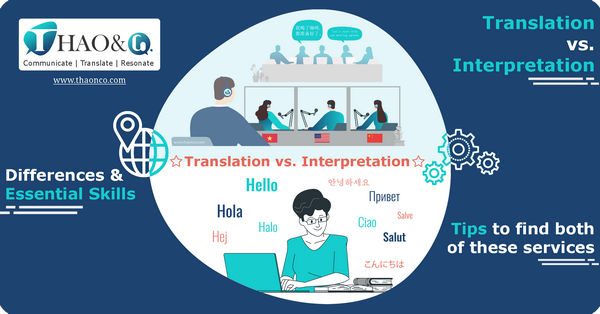Physical Address
304 North Cardinal St.
Dorchester Center, MA 02124
Physical Address
304 North Cardinal St.
Dorchester Center, MA 02124

In the globalized world of today, businesses and individuals often find themselves dealing with legal documents that need to be understood and processed across different languages and jurisdictions. Whether it’s for international contracts, immigration applications, or cross-border legal disputes, both legal translation and legal interpretation play a pivotal role in ensuring that communication is clear, accurate, and legally binding.
Although both legal translation and legal interpretation serve to facilitate communication across languages, they are distinct fields, each requiring specialized skills and approaches. In this article, we will explore the key differences between legal translation and legal interpretation, explaining why both are essential in the legal world, and why choosing the right service provider—like Globibo.com—is critical for ensuring accurate and effective communication.
Understanding Legal Translation
Legal translation involves converting written documents from one language to another while maintaining the accuracy, precision, and legal context of the original text. This type of translation is crucial in ensuring that legal documents are understood and accepted by the relevant authorities in both the source and target languages. Legal documents include contracts, agreements, patents, laws, court judgments, corporate policies, and more.
Key Features of Legal Translation:
Examples of Legal Translation:
Understanding Legal Interpretation
Legal interpretation, on the other hand, is the oral process of translating spoken language in real time, typically during live proceedings such as court hearings, conferences, or negotiations. Unlike legal translation, which focuses on written content, legal interpretation facilitates immediate communication between parties who speak different languages, ensuring that no information is lost during oral exchanges.
Key Features of Legal Interpretation:
Examples of Legal Interpretation:
Key Differences Between Legal Translation and Legal Interpretation
The primary distinction between legal translation and legal interpretation lies in the mode of communication. Legal translation is concerned with written text, whereas legal interpretation is focused on spoken language. Legal translators work with documents that need to be converted into the target language, while legal interpreters facilitate oral communication during events, trials, or meetings.
Legal translation involves a more deliberate and detailed approach, where the translator has time to review the text and ensure that the meaning is conveyed accurately. In contrast, legal interpretation requires immediate translation, with little to no room for error, as it occurs in real-time. Interpreters must make quick decisions, especially in high-pressure legal situations, and their skills are tested by the speed of their delivery.
While legal translation professionals use dictionaries, legal resources, and computer-assisted translation (CAT) tools to ensure accuracy, legal interpreters rely on their linguistic abilities and mental dexterity to quickly and accurately interpret speech. Interpreters often work with headsets, microphones, and soundproof booths, especially in large conferences or courtrooms.
Legal translation focuses on static, written documents, and typically involves long, detailed content, such as contracts or judicial rulings. Legal interpretation, however, is often performed during dynamic, real-time exchanges, such as meetings or court hearings, requiring the interpreter to respond instantaneously to any changes in tone, context, or subject matter.
Both legal translation and legal interpretation require a high level of expertise, but the certification processes are different. While legal translators must be certified to guarantee accuracy, legal interpreters often undergo rigorous training and certification exams specific to the field of interpretation. Certification in interpretation often includes proficiency in simultaneous and consecutive interpretation techniques, legal terminology, and ethical standards for interpreting in legal contexts.
Why You Should Choose a Trusted Provider Like Globibo.com
Whether you need legal translation or legal interpretation services, partnering with a reliable provider like Globibo.com ensures that your legal documents and proceedings are handled by certified professionals. Globibo.com offers a wide range of translation and interpretation services, specializing in legal terminology and providing accurate translations for both written documents and live proceedings.
When you choose Globibo.com for your legal translation or interpretation needs, you benefit from:
Conclusion
In the complex and fast-paced world of international law, both legal translation and legal interpretation are essential components of effective communication. While legal translation focuses on written documents and their precise interpretation in another language, legal interpretation ensures smooth, real-time oral communication during hearings, conferences, and negotiations. Whether you’re dealing with a cross-border business transaction, navigating the immigration process, or engaging in international dispute resolution, it’s crucial to choose the right professionals for both translation and interpretation services.
By selecting trusted providers like Globibo.com, you can ensure that your legal documents and communications are handled with accuracy, professionalism, and expertise, helping you avoid costly misunderstandings and ensuring legal compliance across borders.